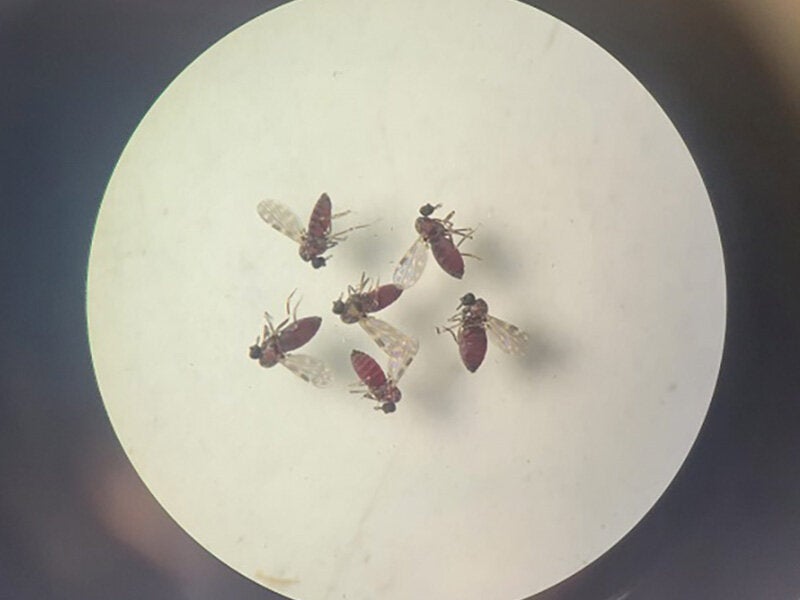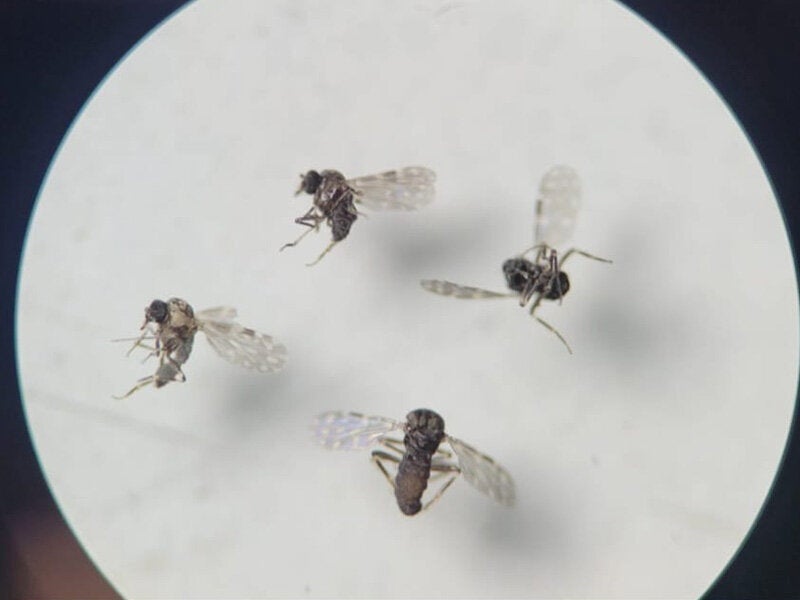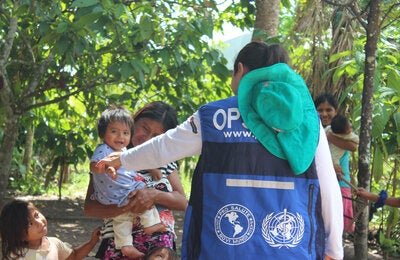
Washington, DC, July 18, 2024 (PAHO) - The Pan American Health Organization (PAHO) has issued an epidemiological alert informing its Member States about the identification of possible cases of expectant mother-to-child transmission of the Oropouche virus (OROV) under investigation in Brazil. The alert calls for strengthened surveillance to monitor the potential occurrence of similar events in other countries with circulation of OROV and other arboviruses.
The OROV virus, a member of the Peribunyaviridae family, is transmitted to humans primarily through the bites of an insect commonly known as a midge, as well as by the Culex mosquito. It was first detected in Trinidad and Tobago in 1955 and, since then, sporadic outbreaks have been documented in several countries in the Americas, including Brazil, Ecuador, French Guiana, Panama and Peru. Recently, an increase in cases has been observed in the region.
Between January and mid-July 2024, nearly 7,700 confirmed cases of Oropouche have been reported in five countries in the Americas, with Brazil having the highest number (6,976), followed by Bolivia, Peru, Cuba, and Colombia. The identification of suspected mother-to-child transmission of the virus occurs against the backdrop of this increase in reported cases.
In a recent case, a pregnant woman, resident of the state of Pernambuco, presented symptoms of Oropouche during the 30th week of gestation. Following laboratory confirmation of OROV infection, fetal death was subsequently reported. A second suspected case was reported in the same state, where similar symptoms in an expectant mother were observed, and resulted in a miscarriage.
"The possible vertical transmission and consequences in the fetus are still under investigation," PAHO states in the epidemiological alert. "However, this information is shared with Member States to make them aware of the situation and at the same time request that they be alert to the occurrence of similar events in their territories," it adds, with the aim of increasing understanding about this possible route of transmission and its implications.
On July 17, 2024, PAHO issued guidelines to assist countries in the detection and surveillance of Oropouche and possible cases of mother-to-child infection, congenital malformation or fetal death. The Organization is working closely with countries where cases have been confirmed to share knowledge and experience.
Symptoms of the disease include the sudden onset of fever, headache, joint stiffness, aches and pains and, in some cases, photophobia, nausea and persistent vomiting that can last five to seven days. Although severe clinical presentation is rare, it may evolve to aseptic meningitis. Full recovery can take several weeks.
To control Oropouche, PAHO calls on countries to implement vector prevention and control actions, including strengthening entomological surveillance, reducing populations of mosquito and other transmitting insects, and educating the population, especially pregnant women, about personal protective actions to prevent bites.
Recommended measures include protecting homes with fine mesh mosquito nets on doors and windows; wearing clothing that covers arms and legs, especially in homes where there are sick people; applying repellents containing DEET, IR3535 or icaridin; and using mosquito nets around beds or furniture where people rest.
Since the increase in the number of cases in the region, PAHO has provided technical support to affected countries to strengthen their capacity to detect and confirm OROV. This effort includes the distribution of reagents for molecular testing and a protocol that is currently available in 23 countries to facilitate early detection.
In addition, PAHO has organized various activities such as an international workshop on the molecular surveillance for emerging and re-emerging arboviruses, which brought together health experts and researchers from Bolivia, Ecuador, Guyana, Paraguay, Peru, Suriname, Venezuela, and Brazil.






